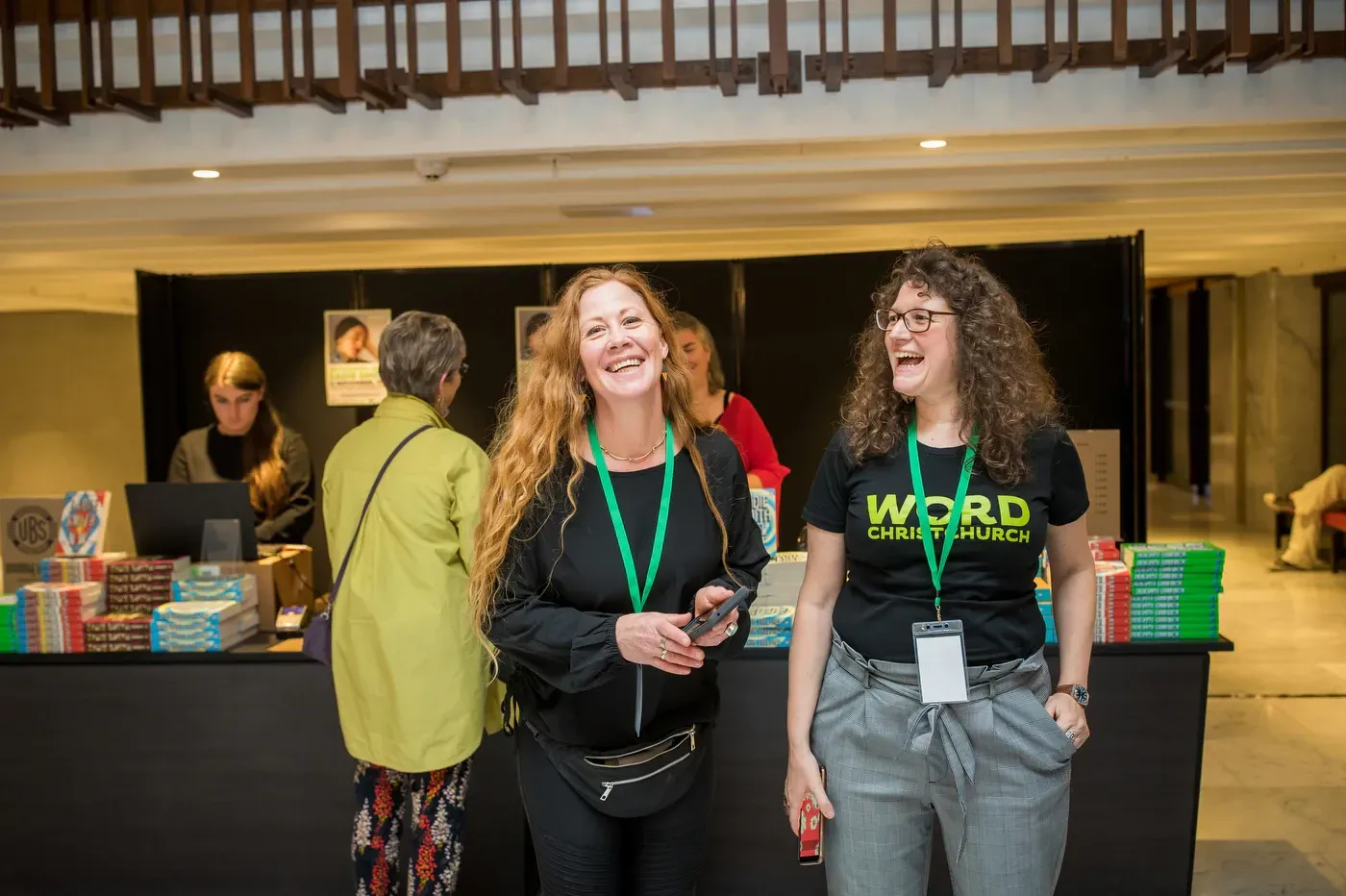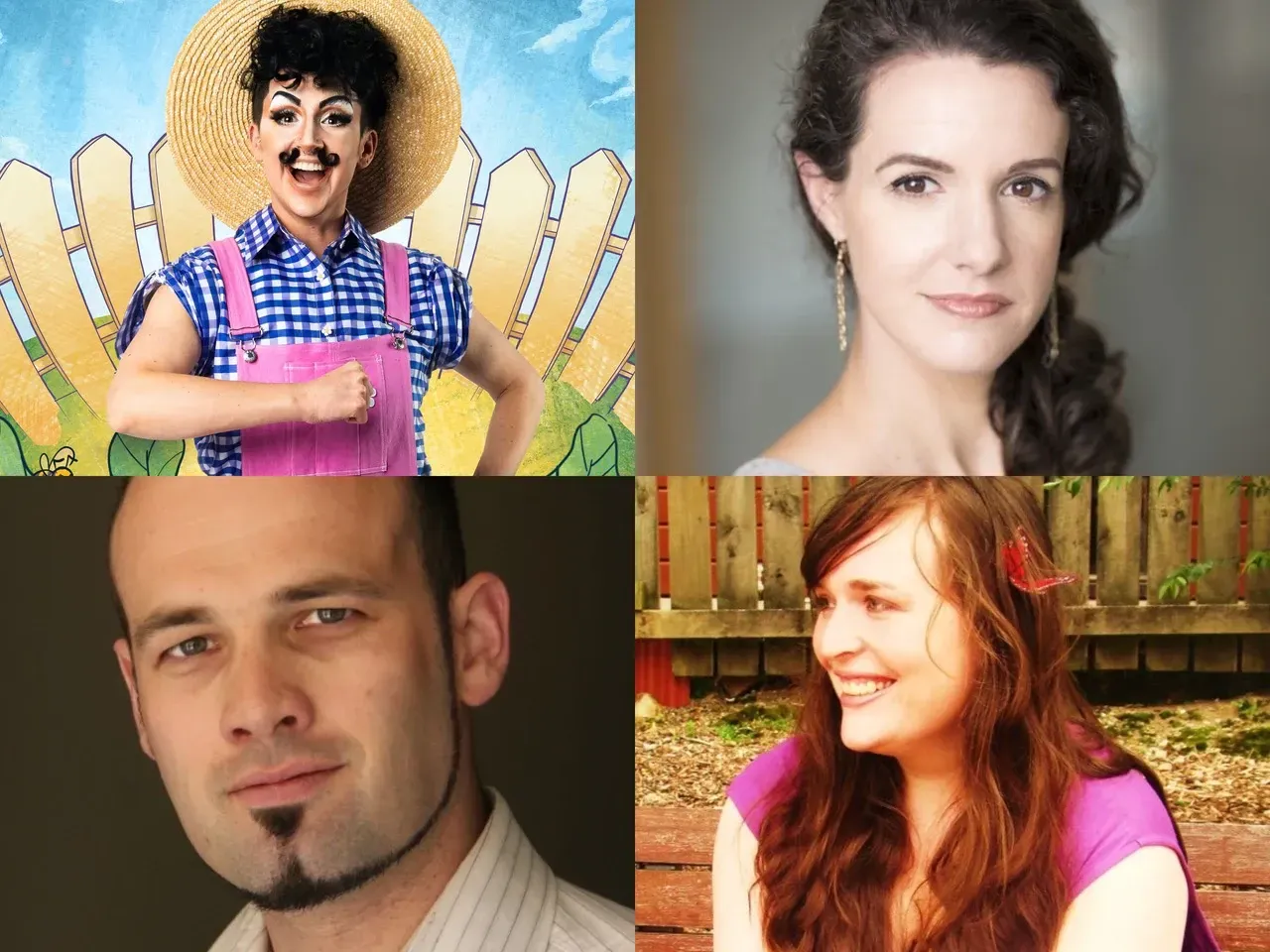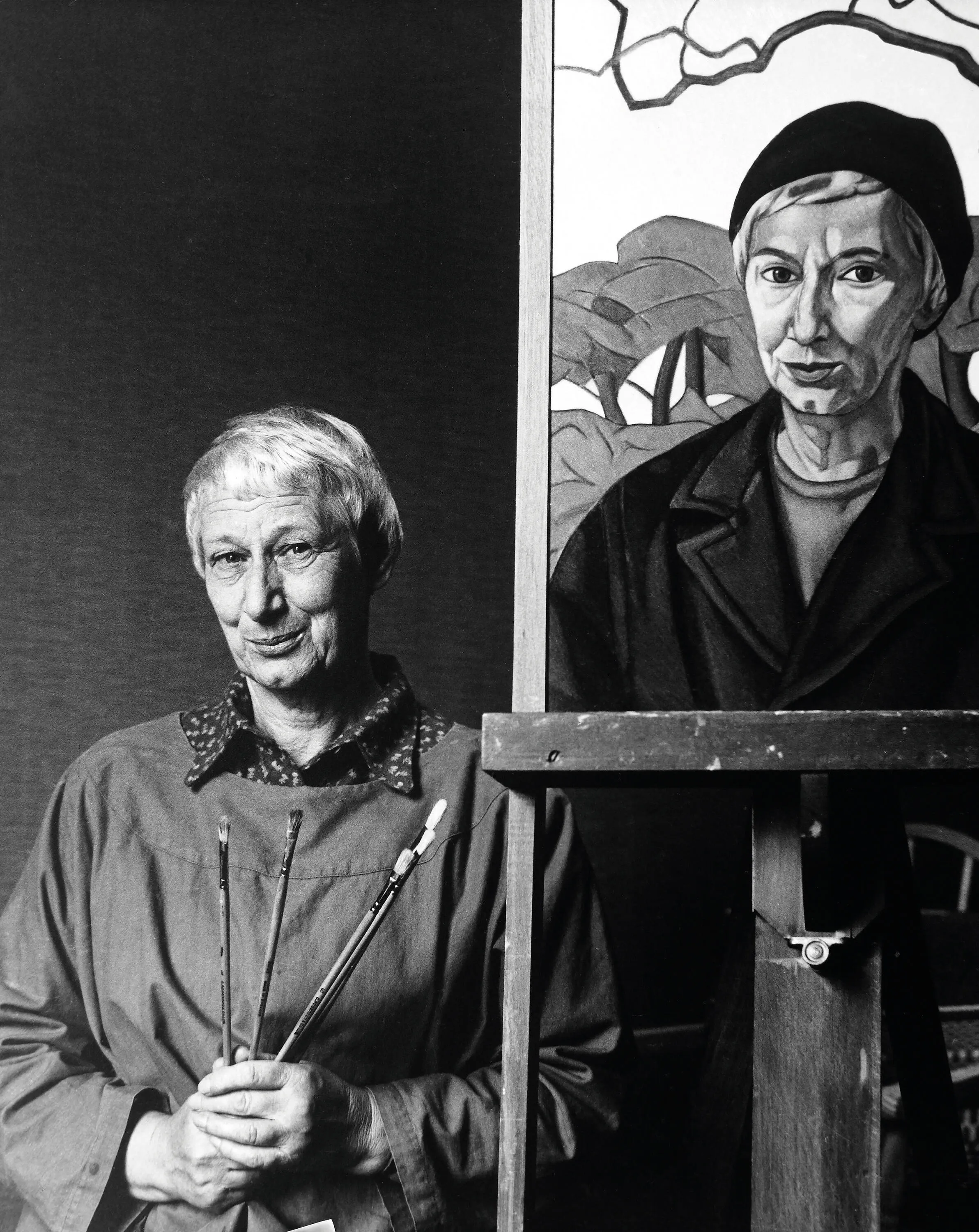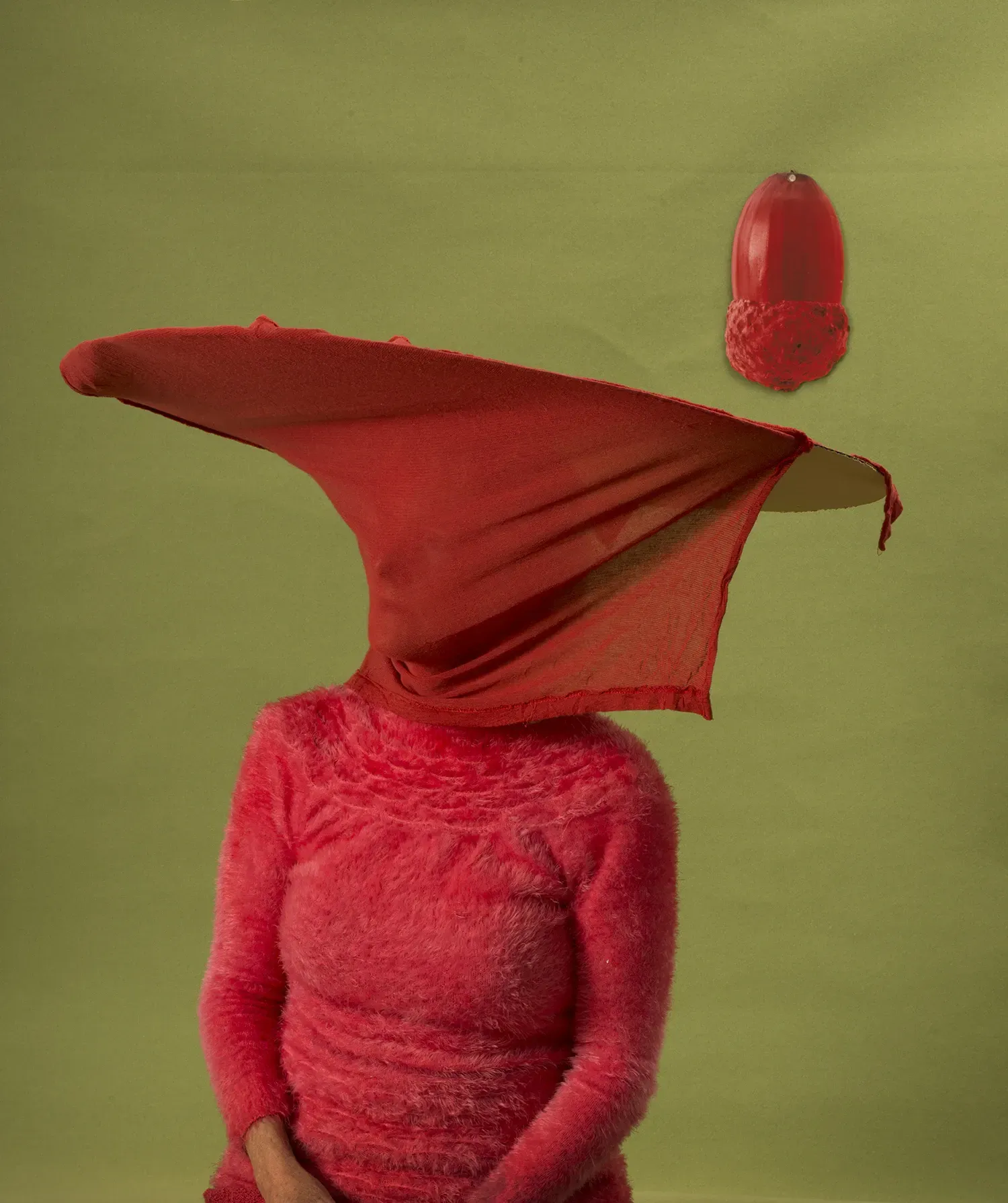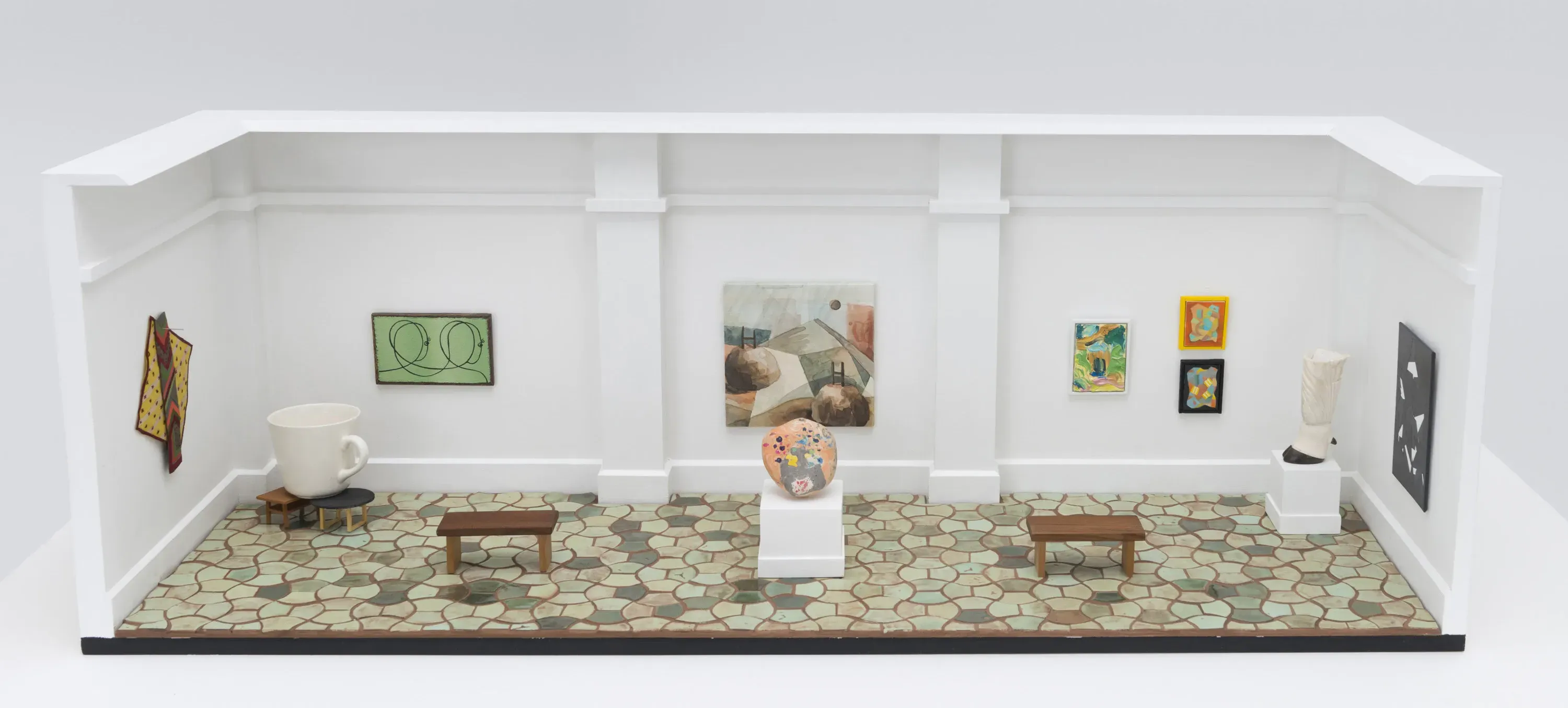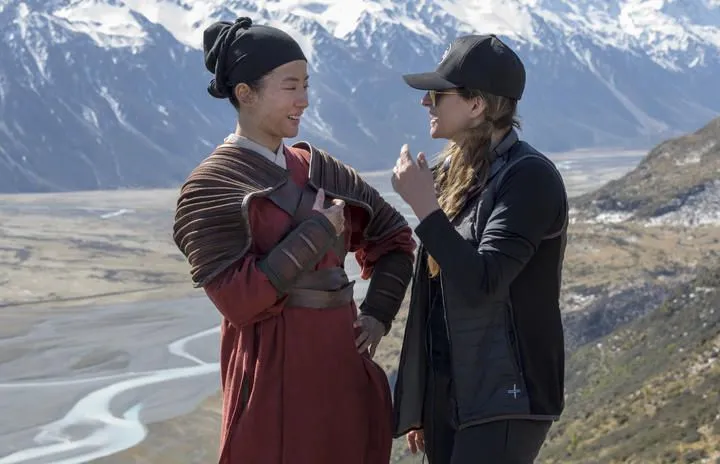Words You've Been Longing to Hear
Written by
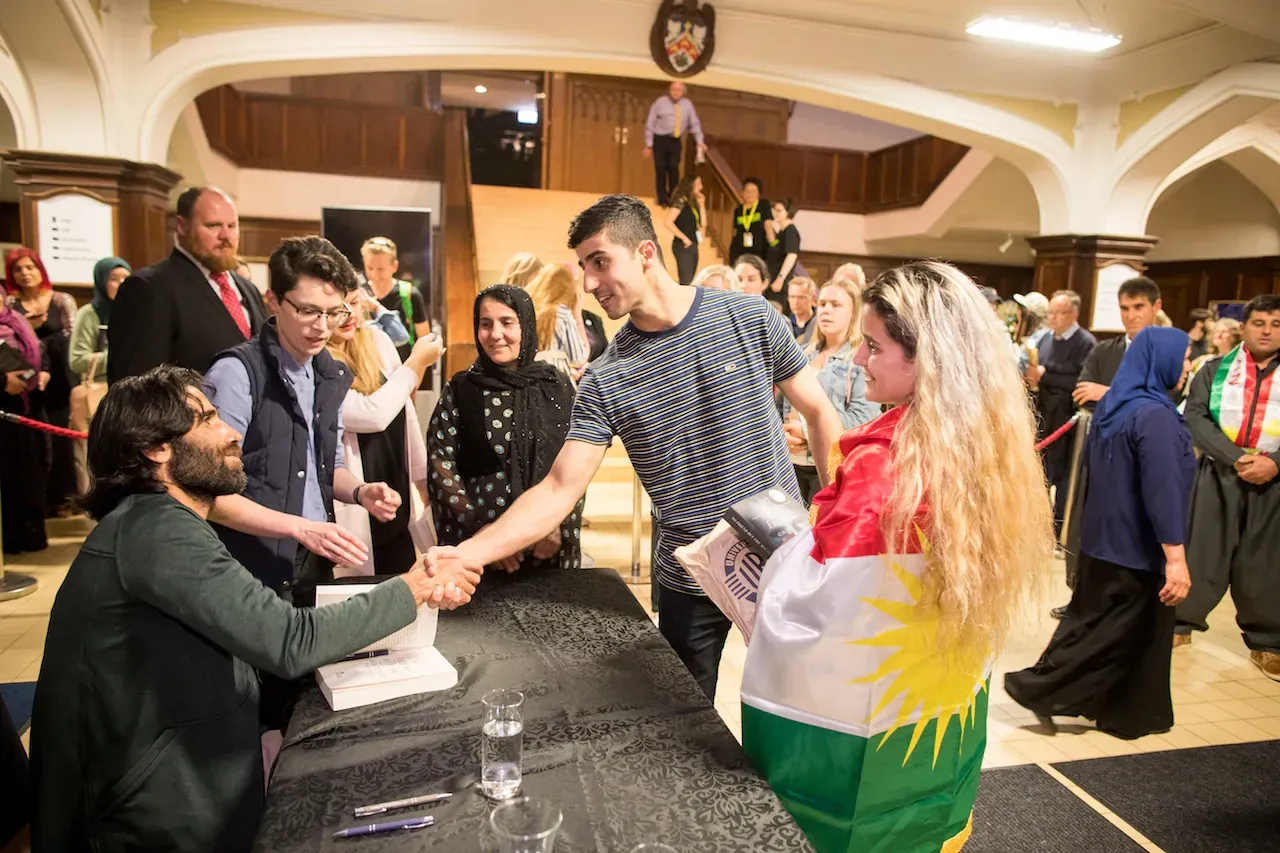
More than words
Last week’s Lowdown considered the important role regional arts festivals are playing as we deal with COVID gathering restrictions. This Spring, we also welcome back some dynamic major young literary festivals around the country, while established Auckland festivals have been forced online.
Verb Wellington’s 6-8 November festival programme launches next Thursday (its seventh), while WORD Christchurch’s fourth festival programme has just been released. And ahead of that - with its programme also now online - is the more modest sixth New Zealand Young Writers Festival, with a clutch of great young writers, running 24-27 September in Dunedin.
WORD Christchurch was postponed in August due to COVID-19 restrictions. 65 events have now been announced for 28 October-1 November (The Press story here). With more than 100 “writers, thinkers and entertainers”, this is a substantial four-day gathering. The festival organisers have, in their words, put the idea of community at its centre. There’s a message there about how we still need to find ways to gather, rather than be isolated.
“We wanted to capture some of the shared experiences, and the challenges and opportunities from those experiences,” writes Programme Director Rachael King in the announcement.
WORD’s guest programmer this year is Ōtautahi poet and comedian Ray Shipley and among the highlights for art-lovers is an event centred around the long-awaited biography of artist Ralph Hotere, with biographer Vincent O’Sullivan joined by Bill Manhire, Cilla McQueen, and Lisa Reihana in discussion.
A year ago, WORD made what Rachael King undersells as “probably an audacious move” (released this week online) inviting journalist Behrouz Boochani to the festival, getting him out of refugee detention on Manus Island. Audacious, no doubt - the kind of outsider audacity New Zealanders welcomingly demonstrate globally on occasion.
Ironically, a year on and Boochani will be one of the only international writers at this year’s festival (though now a Senior Adjunct Research Fellow at the University of Canterbury). He appears in ‘Brave Worlds’, a discussion at the gala that “will ask how we can find courage in the midst of a pandemic”. Hosted by John Campbell, it will also Witi Ihimaera, Elizabeth Knox, Laura Jean McKay, Mohamed Hassan and Becky Manawatu.
It will be interesting to see how both Verb and WORD festivals fare with the in-person absence of one cornerstone of such festivals - a clutch of guest internationals. Perhaps this is a time for our own writers to take back the stage.
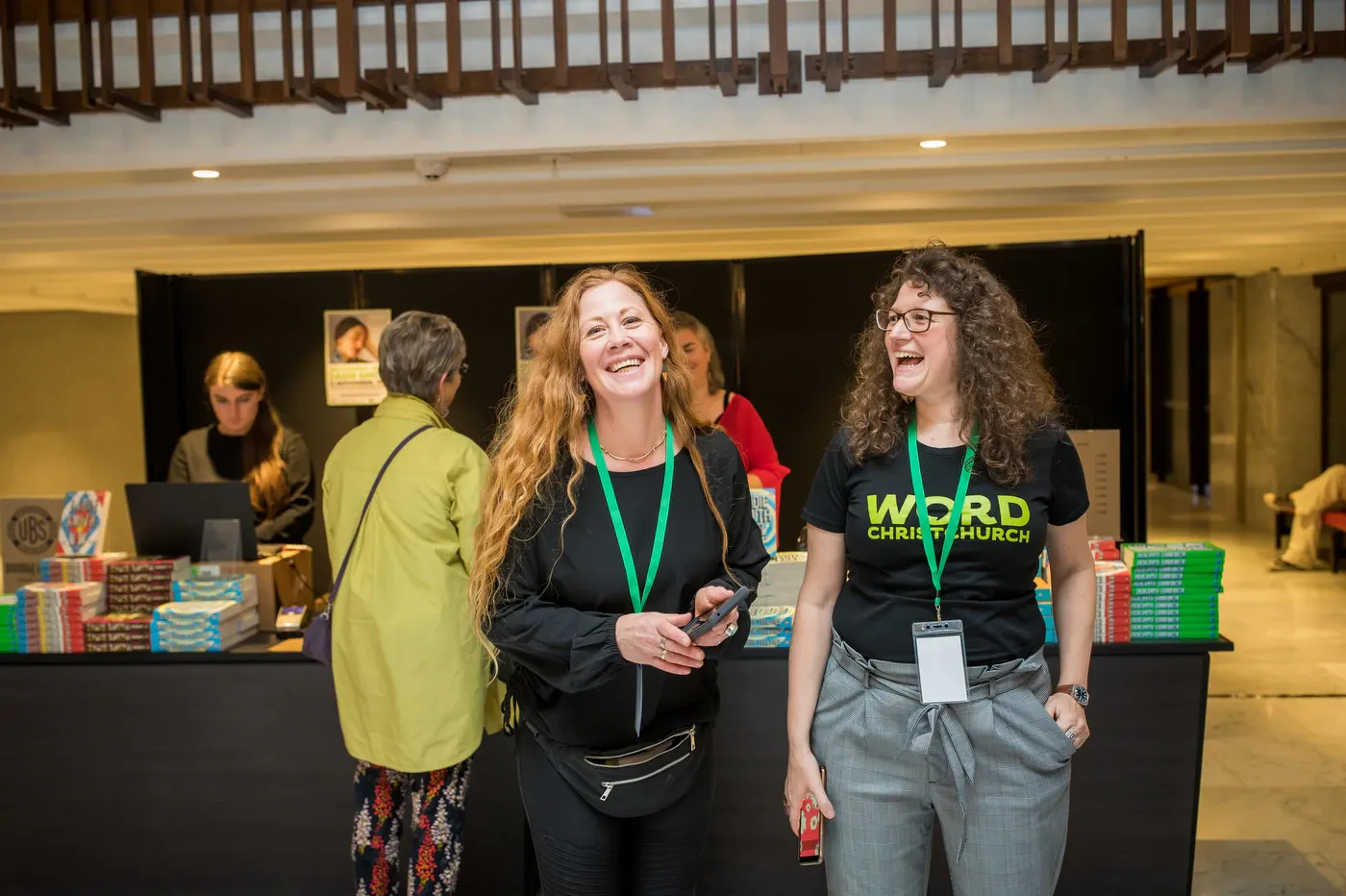
WORD Christchurch staff Vanessa Reed and Magdalena Lorenzo.
As relatively young, dynamic new festival models, both WORD and Verb have been building strong reputations and year-round programmes. Box office for them remains crucial. Online, Verb offers a membership scheme so you can book ahead, get information ahead and get involved, while WORD welcomes donations. It’s worth noting, many of WORD’s events are free to attend.
The juggernaut Auckland Writers Festival had to cancel mid year due to COVID. Instead, they produced a rich series of 13 podcasted and zoomed discussions with groups of writers spread across the globe in June and July - listen to or watch them here.
Also in Auckland, the annual Going West Literary Festival would typically have run this month. This year it launched a podcast series, digging up audio treasures celebrating their 25-year history. As producer James Littlewood explains on The Spinoff, every word spoken on stage since 1996 had been recorded. The latest release is a rare live appearance from Marcus Lush on trains in 2005. Going West have a number of new initiatives on the boil, including commissioning new work, and providing a platform for Te Pou theatre’s Koanga Festival this week.
Books still boss
These festivals play an important part in supporting New Zealand publishing. This week saw the announcement of the finalists for the 2020 Publishers Association of New Zealand’s (PANZ) Book Design Awards. The awards point to the wealth and diversity of Aotearoa’s publishing industry.
In their release, the association notes an interesting statistic from a recent Neilson-commissioned report - The Shape of New Zealand Publishing 2019 - on market share (view the two page highlights here). The survey found physical books (vs digital books) still make up 93% of the domestic market. The ebook hasn’t had the dramatic impact some augured.
The PANZ report notes a total 2019 publishing income of $292.2 million, with 2662 titles published. 87% of the sales are domestic, with 21.1 million books sold in this country last year. Revenue, in fact, had a 6% increase from 2018, and that increase was in physical books, while ebooks suffered a small decrease.
It will be interesting to see the stats for 2020. PANZ reported earlier in the year that the closure of physical and online bookshops in Level Four lockdown (from late March to the end of May) caused a 20% decline in domestic book sales, but had a rebound when bookshops reopened.
Music never dies
Other types of festivals aren’t so lucky. Last Friday The Others Way indie NZ music festival in Auckland confirmed that they won’t be going ahead this Friday due to crowding issues.
We can instead look ahead, further south, to the return of the two-day Waitangi weekend indie music and arts festival Welcome to Nowhere, which this week announced its return in February for its fifth iteration, held “somewhere near Whanganui.”
This doesn’t mean a lack of live gigs out there, even under level 2.5. Instead, they’re going smaller. Hollie Smith, for example, performs two gigs at the Ponsonby Social Club this week, with the first already sold out as I write.
Meanwhile, a host of bands and musicians are getting set to head out on national tours over September and October, as listings on gig platform Undertheradar attests. It’s going to be interesting to see how this goes, with the uncertainties of the new normal.
Announcing accolades
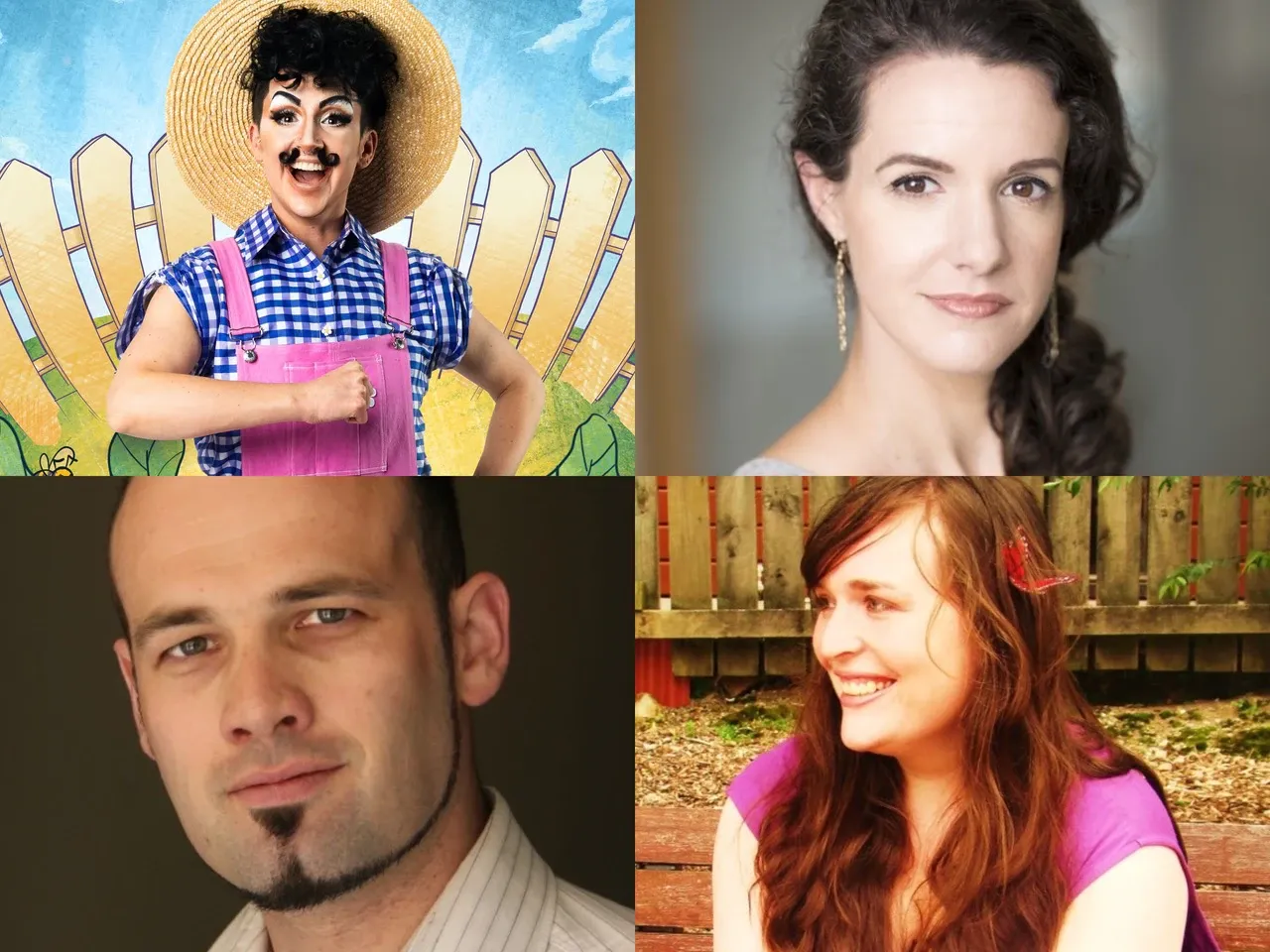
Play for the Young winners: George Fowler, Lori Leigh, Dan Bain and Helen Vivienne Fletcher.
Theatre is a vital way to engage young people with immediacy in the possibilities of language, image and imagination. The importance of quality playwriting for the young is often neglected. Hurrah then: the winners of Playmarket’s 2020 Plays for the Young Competition have been announced. For the 3-6-year-olds, the winner is The Glitter Garden by George Fowler (better known to some by alter ego Hugo Grrrl) and Lori Leigh, for the 8-12-year-olds The Ferocious Animals Petting Zoo by Dan Bain and, in the teenage category, Justice is Blind by Helen Vivienne Fletcher.
Meanwhile, the winners of artistic residencies at McCahon House in Titirangi in 2021 have been announced: Emily Karaka, Moniek Schrijer, and Cora-Allan Wickliffe.
A totara down
One of New Zealand’s leading and most inspirational performing arts teachers and composers for theatre left us this week. Laughton Pattrick passed away on Tuesday morning. The former Head of Music at Wellington College of Education and singing tutor at Toi Whakaari New Zealand Drama School, Pattrick wrote, arranged and directed decades of music for professional theatre, particularly for Wellington’s Downstage and Capital E. A number of them were with his wife, librettist and writer Jenny Pattrick. Tributes will no doubt follow.
Painting helps heal
Artist Zulfirman Syah was shot multiple times on March 15 2019, shielding his son from bullets at Linwood Mosque. A recent immigrant from Indonesia, who showed at last year’s Auckland Art Fair, the abstract acrylic painter is interviewed 18 months on in this Stuff story. Syah says he’s not completely healed, but “when I stand in front of the canvas, for a moment, I forget what happened.”
Syah is one of the artists currently painting 1.6 metre models of a yellow-eyed penguin, as part of the Wild in Art Pop Up Penguins trail for this summer. Syah’s penguin will be at the central Margaret Mahy playground.
The penguins are already popping up all over Ōtautahi to get new coats painted - as scenic shots on the project’s Facebook page demonstrate. I’m just pleased with these fundraising urban pop-up projects that we’re now painting something more environmentally meaningful than just cows and eggs.
Much of Mulan

Mulan Director Niki Caro on set in New Zealand.
The big headline-grabbing NZ arts news this week was the release of Disney’s live-action film Mulan. It controversially premieres on their pay-for online platform, not in cinemas (Dan Slevin critiques this decision on RNZ). Even more noteworthy however is that not only is it directed by New Zealand’s Niki Caro (best known for Whale Rider), the producer, first assistant director and director of photography are all women. Yet the thing the media don’t notice here, which has been a bone of contention previously in the US: neither writer, director, composer or producer are Asian. According to Wikipedia Disney originally approached Ang Lee, but he declined, encouraging them to find an Asian director.
Filmed largely in New Zealand - thanks to Caro’s insistence, it is said - 90% of the cast are local. "The really big upside in having women run a production of this size is that it all runs very smoothly,” Caro quips to RNZ’s Jim Mora in this Sunday Morning interview. Newshub meanwhile interview Caro and cast about being in New Zealand, with lots of film footage included.
Perhaps all of the production should have been shot on our shores - there has been some outrage over connections to Communist organisations while filming some elements in China. The New Zealand Film Commission tells Stuff that the only tax-payer funded grants Mulan received were for expenditure in New Zealand.
In other local film news, Mukpuddy Animation has secured the rights to animate Spike Milligan’s Badjelly the Witch, much-loved in New Zealand (that interesting story is the subject of a 2020 series of articles by Gemma Gracewood on The Sapling). Story in Animation magazine here.
Finally on the film front, a short comedy by Judah Finnigan about a group of teenagers at group therapy - learning how to confront their parents - at the Upper Hutt racecourse premieres at the Venice Film Festival this Friday. Workshop is one of only three New Zealand short films to have been selected for the festival in the past decade. Finnigan spoke to Jesse Mulligan.
We pack meat
Seminal, uncompromising New Zealand industrial rock band The Skeptics are legends in indie quarters, particularly for their ode to working in the meatpacking trade AFFCO and its accompanying video. So of course, it made sense that Wellington band Vorn would do a doo-wop accordion swing version of it. This is their entry into the RNZ’s Kiwi Cover Song Contest (won last year by The Beths).
And while we’re on the subject, it’s high time the 2013 documentary on The Skeptics Sheen of Gold was available to rent streaming online (trailer here). “When this film - Simon Ogston's stylish, thorough and often moving documentary about New Zealand's Skeptics - appeared briefly in cinemas a year ago,” wrote Graeme Reid on Elsewhere in 2014, “it vindicated longtime Skeptic fans who, rightly, believed them to be one of the most important bands ever to emerge in New Zealand.” So, what happened?
Giving women artists their dues
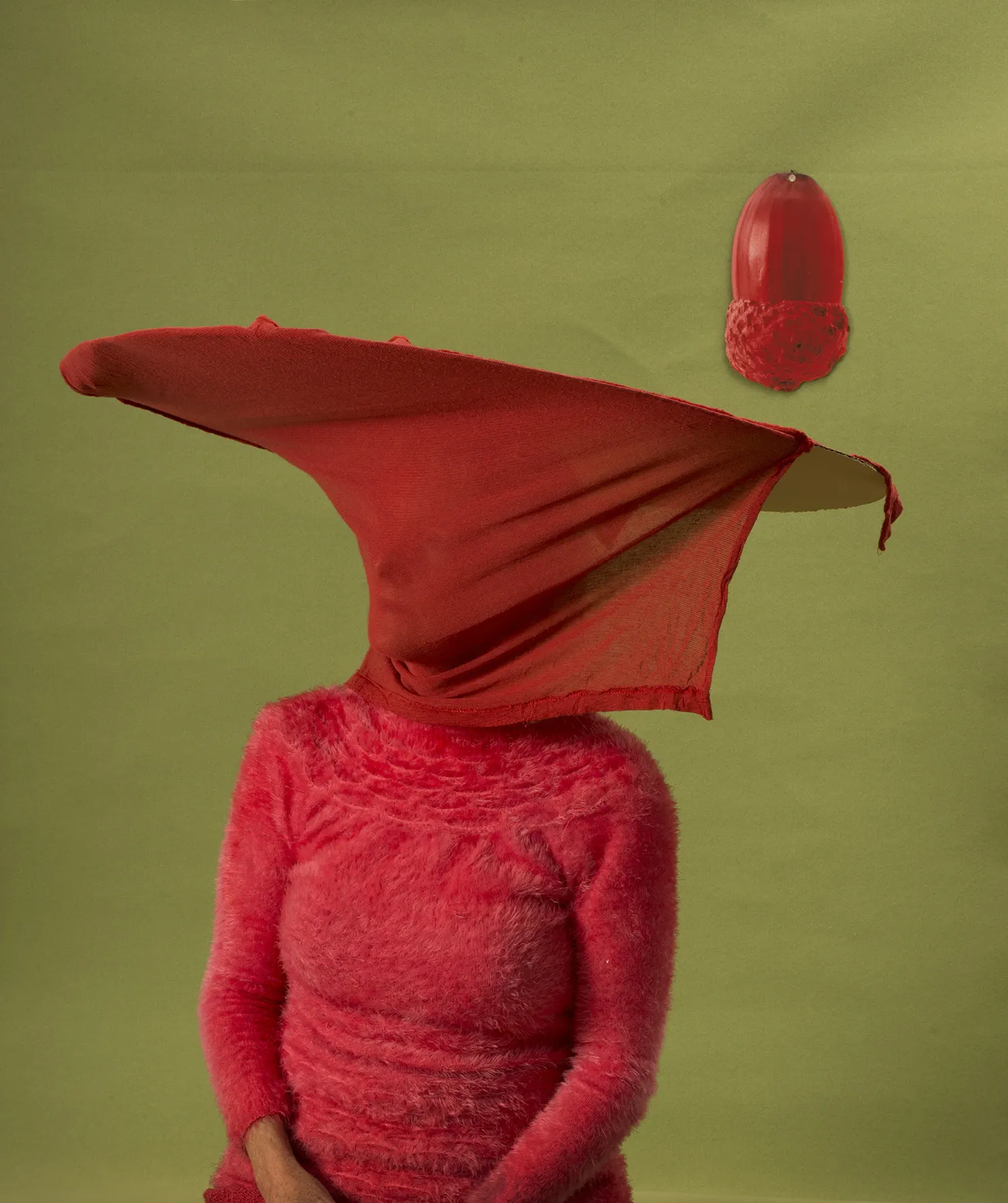
‘Red Acorn’, Andrea Gardner.
“Can you name a non-male artist born before the twentieth century? How about two? Or more?” Really, what a horrifyingly good question.
My mind leapt to Frances Hogdkins, having just seen the terrific touring survey exhibition at the Adam Art Gallery, Wellington. Then I thought of British early photographer Julia Margaret Cameron and Hildegard of Bingen. And ? Wikipedia will provide you with 100s.
The question is asked by Jennifer Higgie, a Frieze magazine Editor at Large and host of the Bow Down podcast, which celebrates significant women from art history, who Megan Dunn interviews on the Verb Wellington and City Gallery sites. The interview is part of the series ‘Art History Is a Mother’ which Verb Wellington Director Claire Mabey and Dunn, Head of Audience & Engagement at City Gallery Wellington, have decided to publish about art. The first essay was ‘Many Mamans: Art Mothers and Monstrous Practice‘ by Irish writer Sinéad Gleeson.
A woman artist worth celebrating right now is Whanganui-based Andrea Gardner. She presents a portfolio of photographic work that uses her body and costume to create absurd poignant assemblages here on Photoforum, with an essay from Suter Gallery curator Sarah McClintock.
“By treating the human form as a shape, Gardner is disrupting the hierarchy that privileges the figure,” McClintock writes. “She does not simply hide the body, instead she refuses to prioritise it.”
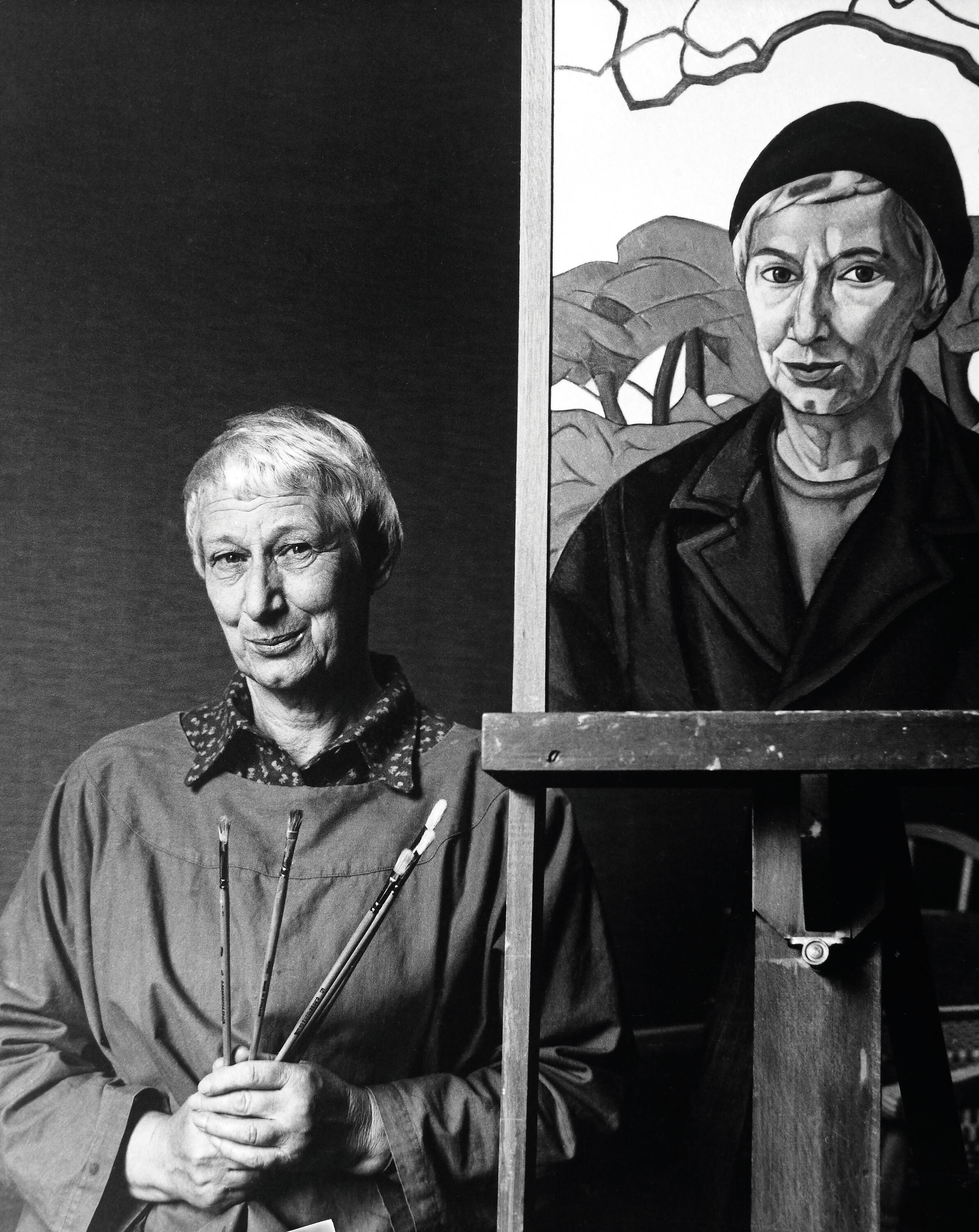
Rita Angus, Wellington, 1969 - Photo courtesy of the Gerrard and Marti Friedlander Charitable Trust.
Giving women artists their due from the 1960s onwards was photographer Marti Friedlander. Kate Powell writes on Leonard Bell’s book and accompanying New Zealand Portrait Gallery exhibition Marti Friedlander: Portraits of the Artists on The Big Idea here. There’s “always an alternative canon, a history that focuses on the artists that have been omitted or marginalised,” Bell notes.
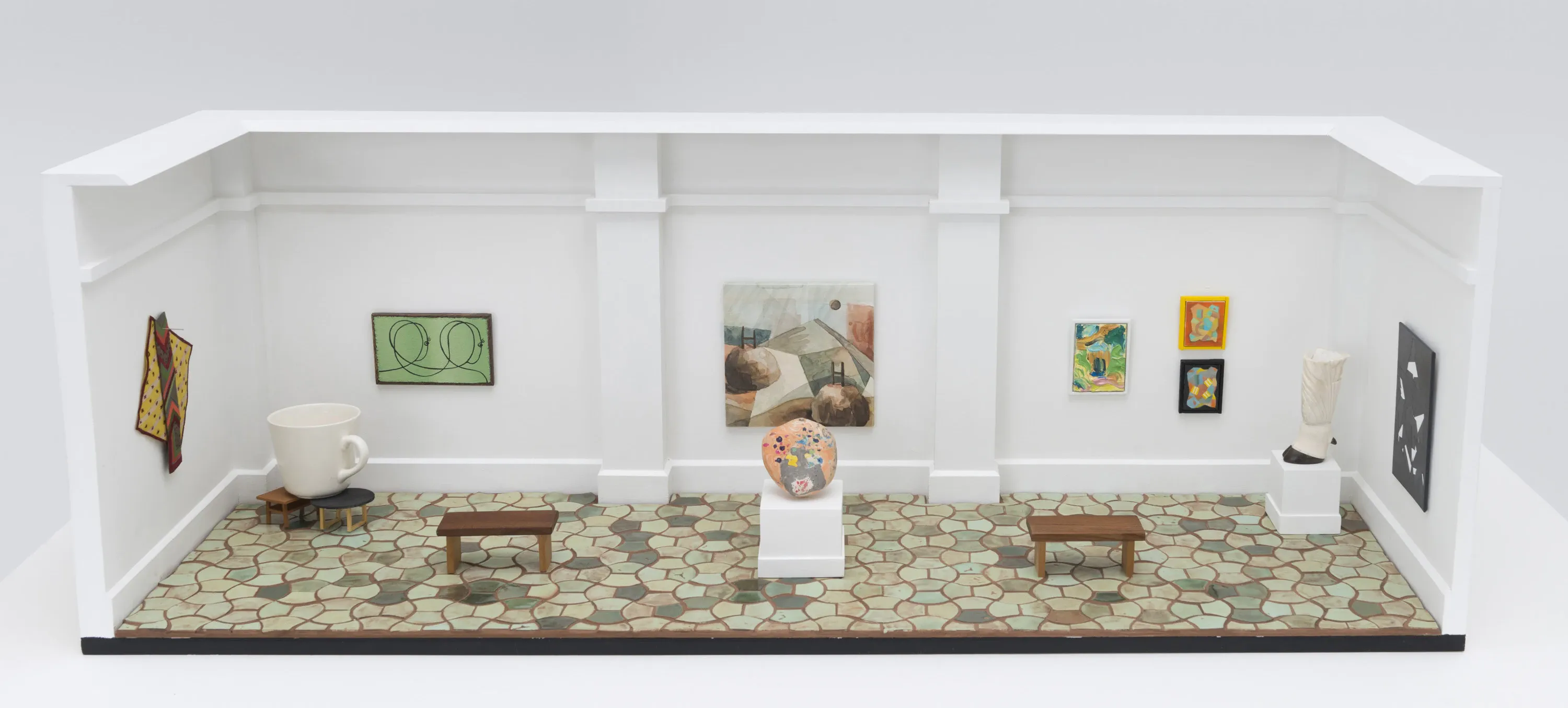
19 Gallery: Relocating Frances Hodgkins (installation view), Auckland Art Gallery Toi o Tāmaki, 2019.
And while I’m thinking about Frances Hodgkins, here’s a great wee Auckland Art Gallery video I missed last year about the ‘19 Gallery’, a miniature currently on show at the Adam Art Gallery. In 1934, London art dealer Sydney Burney commissioned British modernist artists to create works for a miniature gallery, which included two postage stamp-sized paintings by Hodgkins. Last year Auckland Art Gallery neatly reworked the concept by commissioning tiny paintings and sculptures from 19 New Zealand artists.
Now then, how many women playwrights can you name born before the 20th century? Good luck to you! You’ll be pressed before the 1960s. So celebrate then this great Spinoff interview with New Zealand playwright Pip Hall, also the screenwriter behind One Lane Bridge, which has a second season confirmed.
Want More of the Lowdown?
Check out past Arts Media Lowdowns here and subscribe here to our weekly bulletin so it comes straight to your inbox.
Our Annual Directory of Arts Online can be found here.
News and content ideas are welcomed for future editions of Arts Media Lowdown. Please send to mark.amery@thebigidea.co.nz
